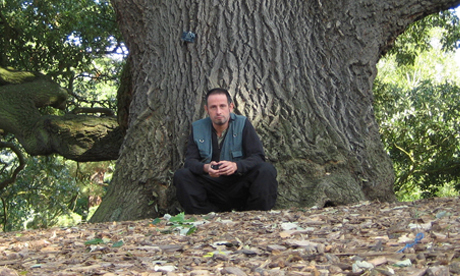The orchard squad – all for trees and trees for all

Russell Miller of the Tree Musketeers
With a nod to the original Three Muskeeters, Hackney’s own ‘Tree Musketeers‘ live by their own similar motto. “‘All for trees – and trees for all,” says Russell Miller, explaining the group’s raison d’etre.
“We protect, preserve and care for trees in Hackney with emphasis on caring and protecting, because an awful lot of planting gets done particularly in urban areas, and just fails.”
Set up in 1998, the Tree Musketeers used to be a group that followed the Council’s lead. “However, we changed our name in 2002 to the Tree Musketeers, and we took the group towards doing what needs doing,” explains Russell.
“Instead of waiting for anyone else to direct us, we worked out what needed planting where and got on with it.”
The group works with the Council’s tree unit, but maintains a distance. “As with everything with the Council, the Parks Department has varied and changed over time. In many respects, the role of trees in the Department has shrunk as the Department itself has shrunk, and that’s caused problems with the Council’s own planting.
“This is because actually trees do pretty poorly when the council plants them, because they’re not managed by arboroculture people who actually understand trees.
“You can plant any number of trees, but it’s whether you want them there five, ten, a hundred years later. And whilst the Council probably still plants more trees than us, we probably have more trees surviving than they do.
“It’s not a competition, though – I’ve given training to the Council’s gardening staff, and obviously the ambition is that we have more trees.
“But the Tree Musketeers could plant and sustain a lot more trees if the coordination with the Council was a lot better.
Russell describes the group as more a ‘way of being’ than an organisation: “Someone might be a volunteer one year and then they might come back three years later. Or they may become regular, and come every week.
Asked to identify notable Hackney trees, Russell mentions the north end of the borough with its large, old parks. “Springfield and Clissold, which have big Victorian tree collections and some that are even older than that.
“Clissold’s got some big old oaks and plane trees that pre-date even the park. Part of the park was part of Newington Common, not Stoke Newington Common, which is somewhere else, but the south-west corner bounded by Church Street and Green Lanes.
“The chestnuts on that are probably older than any other chestnuts in Hackney.
“Abney Park Cemetery is probably still the gem of Hackney’s trees both because it has both very rare old, unusual oaks from the Loddiges planting in the 1840s, but also because it’s the biggest and most diverse woodland in the borough. If you want to get lost in a woodland, Abney’s the place to go.
“Springfield Park has some magnificent beech trees and good old collections of wonderful black walnut.”
When questioned about fashions in tree planting Russell mentions orchards as the latest craze: “Obviously there’s the issue of sustainability and access to local food. We’ve been involved in nine up to now, working with lots of different groups.
“Hackney’s orchards are scattered across the borough. They include the one on Butterfield Green (Stoke Newington), which was planted by the user group there; Hackney Downs, which we pioneered;
“Springfield Park, which was a joint venture with the park user group and the allotments people; Spring Hill, where there are other allotments; and Daubeney Green – between Clapton Park Estate and the Kingsmead Estate, which came about through Groundwork and an Olympics initiative.
“Millfields Orchard went in last year with help from the user group. It’s on south Millfields, tucked away by the canal, right where the electricity substation is. It was funded by National Grid as part of the compensation for the upheaval created by their massive new substation. At 50 trees, it’s the biggest orchard.
“There are fruit trees at the forest garden [on Hackney Marshes] and in Wick Woodland and in Kingfisher Wood, one of the new woodlands on Hackney Marshes on the main marsh.”
And other autumn highlights? “Things to look out for are the Caucasian Ash in Clissold Park by the bowling green. It goes a wonderful yellow colour round about November. The True Service Tree in Clapton Square goes an amazing red in November. The liquidambars all turn an amazing red, there’s quite a few of those, relatively young trees on the streets.
“If you’re walking or cycling about and you see a bright red, semi-mature tree on the street in late October, that’s going to be a liquidambar. And then I guess fruit on trees.”
Asked whether this will be a good year for fruit, Russell says, “Probably a better year for vegetative growth than fruit, in that fruit wants a bit of heat to get it going.
“Our orchards are not yet mature, but within five years there’s going to be quite a lot of fruit around. It remains to be seen how they do on the soils they’re on.
“London clay is quite good stuff, but Hackney has a pretty universal layer of rubble, either bomb rubble from the war or Victorian infill, for example under Millfields Orchard and the Downs orchard.
“Springfield probably has got a better soil. We just have to see, and probably we’ll have to add some horse manure.”
More information.
Email: trees@treemusketeers.org.uk
Tel: 07758 326 530
Full interview here.
